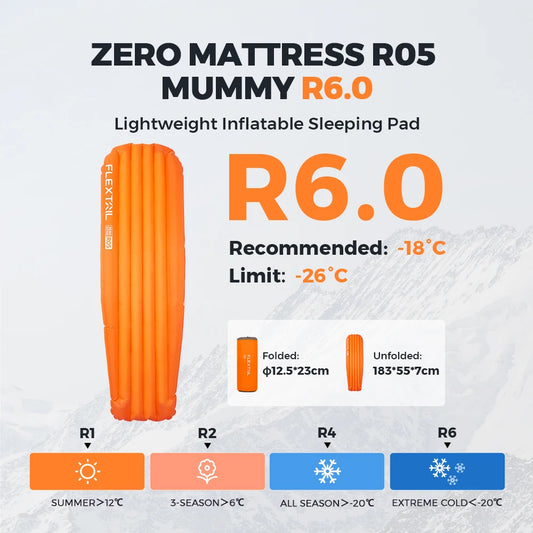
Best Hiking Gear Essentials : What to Pack for Your Next Trip
Share to your friends
When planning a hiking adventure, you have to be properly equipped for both your safety and comfort on the trail. Whether you’re embarking on a short day hike or a multi-day trek, packing the essentials can make all the difference. Below, we’ve compiled a list of must-have items to take on your hiking trips, ensuring you’re well-prepared for any situation. You can check our gear right here if you're interested.
1. Backpack
Your backpack is your lifeline on the road. Choose one that’s comfortable, lightweight, and large enough to carry all your essentials without being too bulky. For day hikes, a 20-30 liter pack should suffice, but for longer trips, a 40-60 liter pack is ideal. Look for features like padded shoulder straps, a hip belt for weight distribution, and multiple compartments to keep things organized.
2. Navigation Tools
Even on well-marked trails, it’s important to have reliable navigation tools. A physical map and compass should always be included in your gear, along with a GPS device or smartphone with a trusted hiking app. Be sure to download maps for offline use in case you lose signal in remote areas.
3. Proper Footwear
Investing in quality hiking boots or shoes can save your feet from blisters, discomfort, and injury. Choose footwear that’s appropriate for the terrain; lightweight hiking shoes for smooth trails and sturdy, waterproof boots for rocky, uneven, or wet paths. Don't forget to pair them with moisture-wicking socks for added comfort (for extended hikes, good socks are a must).
4. Hydration System
Staying hydrated is key, especially during longer hikes. Carry a water bottle or a hydration reservoir, and if you're hiking in areas with unreliable water sources, pack a portable water filter bottle or purification tablets. A good rule of thumb is to drink about a half-liter of water per hour of moderate activity in moderate temperatures.
5. Food and Snacks
Even for a day hike, it’s important to pack high-energy, non-perishable snacks. Energy bars, trail mix, dried fruits, and jerky are great options. For multi-day hikes, plan meals that are lightweight and easy to prepare, such as freeze-dried meals or instant oatmeal.
6. First Aid Kit
Accidents can happen, so always carry a well-stocked first aid kit. Include essentials like bandages, antiseptic wipes, pain relievers, tweezers, and any personal medications you may need. It’s also a good idea to have blister treatments and insect repellent in your kit.
7. Clothing Layers
You must be aware that weather can change rapidly, especially in the mountains. Dress in layers to regulate your body temperature as conditions shift. Start with a moisture-wicking base layer, add an insulating middle layer, and finish with a waterproof outer shell. Don’t forget a hat and gloves for cooler climates, and always pack an extra pair of socks !
8. Shelter
For overnight hikes, you’ll definitely need a shelter, whether it’s a lightweight tent, bivy sack, or hammock. Even if we don't think about it, on day hikes, an emergency shelter, like a space blanket or a small tarp, is a good precaution in case you get stuck overnight unexpectedly. It can surely save lives so think about it twice !
9. Multi-tool or Knife
A multi-tool or a reliable knife can be invaluable for various tasks, from preparing food to fixing gear or starting a fire. Choose one that’s lightweight but durable, with essential tools like scissors, a can opener, and a screwdriver (we never know !).
10. Headlamp or Flashlight
Even if you’re only planning a daytime hike, it’s wise to carry a headlamp or flashlight, especially with shorter daylight hours in the fall or winter. Make sure to pack extra batteries or bring a solar-powered charger to keep your light running.
11. Sun Protection
Exposure to the sun can be more intense at higher elevations. Protect yourself with sunglasses, sunscreen, and a wide-brimmed hat. Choose sunscreen with at least SPF 30, and don’t forget to reapply it regularly, especially after sweating or swimming.
12. Trekking Poles
While not a necessity for everyone, trekking poles can greatly reduce strain on your knees and improve stability on rough or uneven terrain. They’re particularly useful on long hikes or when carrying a heavy pack. For further detail on this interesting subject, we made a blog for all the benefits of trekking poles for hiking, and you can read it by clicking here. Happy reading !
Conclusion
Having the right gear can enhance your hiking experience and keep you safe on the trail. Before setting out, always check your equipment to ensure everything is in good condition, and remember to tailor your packing list based on the length of your hike, weather conditions, and the terrain.
Feel free to explore all the gear we propose in our website !
Ezorya Team








